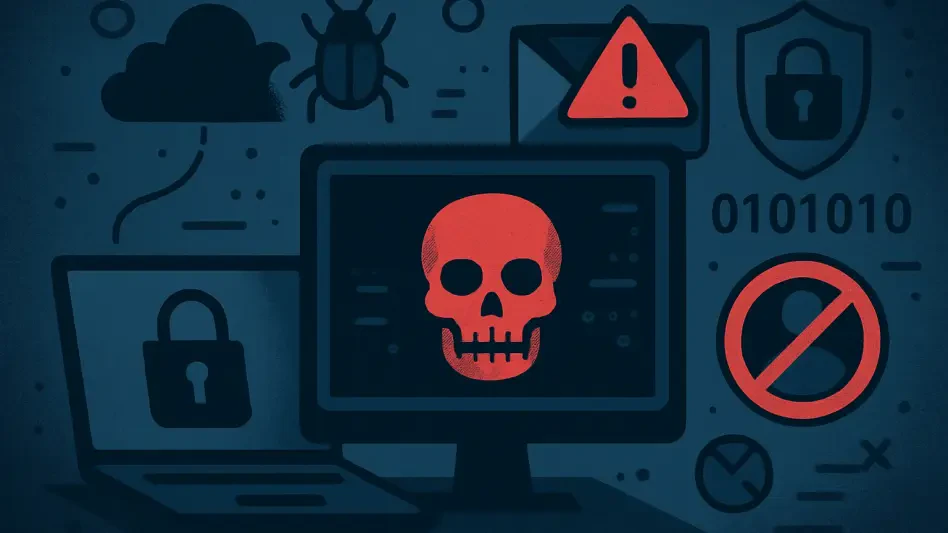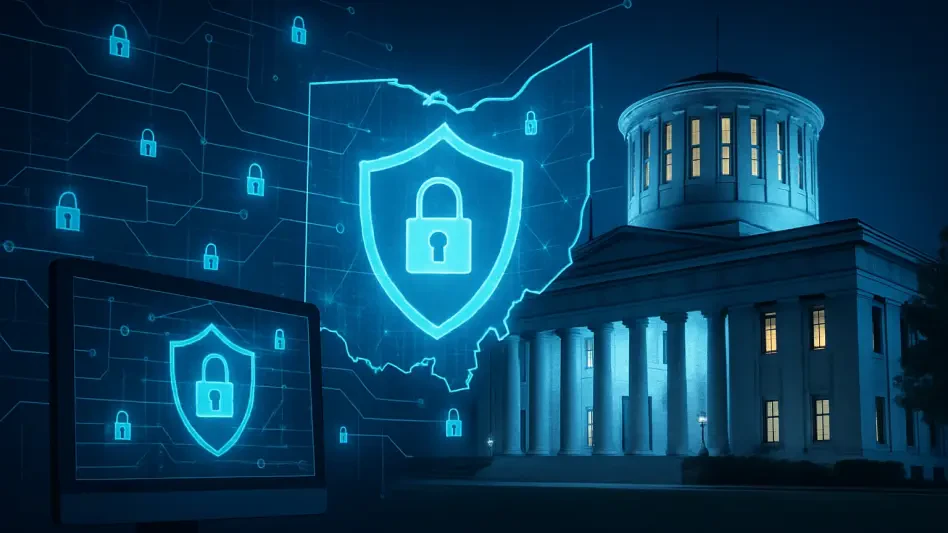The escalating trend of state-sponsored cyber warfare poses a significant challenge to organizations, particularly those that operate critical infrastructure. Recent developments emphasize the need for robust and resilient cybersecurity measures to thwart these sophisticated assaults. The nature of cyber warfare has evolved, moving from mere disruption and data theft to the strategic destabilization of essential systems that underpin national security and economic stability. This emerging threat landscape demands proactive and comprehensive defense strategies.
The Evolving Nature of Cyber Warfare
High-Profile State-Sponsored Cyberattacks
Recent high-profile cyberattacks, such as Volt Typhoon, Flax Typhoon, and Salt Typhoon, underscore the critical shift in cyber warfare tactics. These incidents highlight that unlike cybercriminals who primarily seek digital chaos or engage in industrial espionage, state-sponsored actors are increasingly targeting critical infrastructure. Their main objective is to undermine national resilience, disrupt economies, and cause widespread societal instability. These sophisticated threat actors employ custom-built tools to infiltrate networks stealthily, establish persistent access, and remain undetected until they strategically choose to launch their attacks.
The implications of such advanced cyber operations are profound. When critical infrastructure is compromised, it can lead to cascading failures across multiple sectors, potentially paralyzing vital services and creating chaos. This level of disruption has far-reaching consequences on a nation’s economy, public confidence, and overall security. Therefore, understanding and countering the tactics employed by state-sponsored actors is essential for safeguarding infrastructure and ensuring national resilience in the face of growing digital threats.
Objectives and Tactics of State-Sponsored Actors
State-sponsored cyber actors have specific objectives, including destabilizing critical infrastructure systems, disrupting national economies, and undermining societal stability. To achieve these goals, they employ sophisticated techniques to remain undetected within target networks for extended periods. Often, they embed malicious code deep within systems, waiting for strategically advantageous times to activate their attacks. This shift in tactics necessitates a reevaluation of traditional cybersecurity measures, pushing organizations to adopt more proactive and resilient defense strategies.
The tactics used by these actors involve advanced methods such as spear phishing, zero-day exploits, and supply chain compromises, designed to penetrate security perimeters and establish long-term footholds. By gaining control over systems and delaying the detection of their presence, these attackers can meticulously plan their operations to maximize impact. Organizations must recognize this evolving threat landscape and focus on building robust defenses that emphasize early detection and swift response to mitigate potential damage from state-sponsored cyber threats.
Defensive Strategies for Organizations
Robust Network Segmentation
One of the primary defensive strategies against state-sponsored cyber threats is robust network segmentation at the macro and micro levels. Network segmentation involves dividing an organization’s network into isolated segments or subnets to limit attackers’ ability to move freely across systems and significantly reduce the potential damage if a breach occurs. This approach is increasingly becoming a regulatory requirement, with regulations such as the Digital Operational Resilience Act (DORA) in Europe and the Network and Information Systems Directive (NIS 2) mandating it as a risk mitigation measure.
Implementing network segmentation involves identifying critical systems that require heightened protection and isolating them from other network parts. Access to each segment should be tightly controlled and restricted to authorized personnel only. Continuous assessment of segmentation policies is necessary to detect any violations that could indicate lateral movement attempts by attackers. By segmenting the network, organizations create substantial barriers against unauthorized access and minimize the risk of extensive damage from a single compromised segment. This proactive measure strengthens overall security and ensures compliance with evolving regulatory standards.
Implementing Effective Network Segmentation
To effectively implement network segmentation, organizations should first conduct a thorough assessment to identify which systems and data are most critical and warrant isolation. Segmented networks should be designed with redundancy and failover mechanisms to ensure that the potential impact of an attack on one segment does not cascade to others. Access to each network segment should be governed by strict authentication and authorization protocols to minimize unauthorized entry. Additionally, regular audits and continuous monitoring should be established to ensure the integrity of segmentation policies and to promptly detect any anomalies that indicate potential security breaches.
Continuous monitoring of network segments is vital for detecting policy violations and unusual activities that could signal an ongoing attack. Incorporating automated tools capable of real-time analysis and detection can significantly enhance these efforts. These tools can flag suspicious behavior and alert security teams to take immediate action, preventing attackers from exploiting segmentation weaknesses. Effective network segmentation not only enhances security by limiting the scope of potential breaches but also aligns organizations with regulatory compliance requirements, thereby demonstrating a commitment to sound cybersecurity practices.
Proactive Cybersecurity Monitoring
Importance of Continuous Monitoring
Given the stealthy nature of state-sponsored cyberattacks, proactive monitoring strategies are essential for timely detection and mitigation of threats. Continuous assessment of network configurations is crucial to identify planned or unauthorized changes, exploitable misconfigurations, vulnerabilities, or segmentation violations. Automated monitoring tools that detect unauthorized changes in real-time are indispensable in maintaining a secure environment. Organizations must focus on deploying advanced monitoring solutions that provide comprehensive visibility into network activities and can flag any deviations from established security policies.
Monitoring privileged user activities is particularly important, as these accounts are prime targets for attackers seeking high-level access. Privileged accounts hold the keys to the most critical systems and data, making them highly valuable for malicious actors. Enhancing monitoring capabilities involves utilizing tools that continuously track user behavior for abnormal activities and implementing responses for quick action when anomalies are detected. By establishing a robust monitoring system, organizations can detect and respond to threats more rapidly, reducing the window of opportunity for attackers and preventing significant damage.
Monitoring Privileged User Activities
Monitoring the activities of privileged users is a vital component of a robust cybersecurity strategy. Privileged user accounts often have access to sensitive information and critical systems, making them attractive targets for state-sponsored attackers. To effectively monitor these activities, organizations should implement solutions that track user behavior in real-time, analyze patterns, and identify anomalies that deviate from typical usage. This approach helps in early detection of potential insider threats or compromised accounts, allowing security teams to take swift action to mitigate risks.
Advanced monitoring solutions can create detailed logs of privileged user activities, providing visibility into actions such as access to sensitive files, changes to system configurations, and administrative tasks. Regular audits and reviews of these logs can help identify suspicious behavior and potential security breaches. Additionally, implementing role-based access controls and limiting the number of privileged accounts can further enhance security. By continuously monitoring privileged user activities, organizations can significantly reduce the risk of unauthorized access and ensure the integrity of their critical systems and data.
Accurate Configuration Management
Role of Configuration Management
Accurate configuration management, as emphasized by the U.S. Cybersecurity and Infrastructure Security Agency (CISA) in its guidance for defending against threats like Salt Typhoon, is crucial in maintaining a secure network environment. This process involves maintaining a central configuration management database (CMDB) that accurately reflects the live running configurations of all devices within the network. A well-maintained CMDB helps network defenders track configuration changes, detect unauthorized modifications, and support disaster recovery efforts by enabling quick reversion to desired configurations in case of a breach or outage.
A central CMDB serves as a single source of truth for all network configurations, facilitating comprehensive oversight and control. By maintaining up-to-date and accurate records, organizations can quickly identify deviations from approved configurations, which may indicate potential security incidents. Moreover, a CMDB aids in the recovery process, allowing teams to restore systems to their desired states efficiently, minimizing downtime and operational impact. Accurate configuration management thus plays a significant role in ensuring the resilience of an organization’s network infrastructure.
Benefits of a Central Configuration Management Database
Having an accurate CMDB offers numerous benefits for an organization’s cybersecurity posture. One major benefit is the ability to create a digital clone of network configurations, enabling teams to test proposed configuration changes in a controlled environment before applying them to live systems. This proactive measure helps identify any operational or security issues that changes might introduce, ensuring that only thoroughly vetted modifications are implemented. It reduces the risk of inadvertently creating vulnerabilities or disrupting operations due to poorly executed configuration changes.
Furthermore, a well-maintained CMDB supports regulatory compliance efforts by providing a transparent record of configuration management practices. During audits, organizations can demonstrate adherence to security policies and regulatory requirements by presenting detailed configuration logs and change histories. This transparency reinforces stakeholder trust and showcases a commitment to robust cybersecurity practices. Overall, maintaining an accurate CMDB is a foundational element of effective network security, enabling organizations to manage configurations proactively and maintain resilient operations in the face of evolving cyber threats.
Advanced Threat Detection for Dormant Threats
Techniques for Detecting Dormant Malware
State-sponsored threat actors often employ techniques to embed malicious code deep within systems, allowing it to remain dormant until activation is strategically advantageous. Detecting such dormant malware requires sophisticated threat detection tools that can analyze network behavior for subtle anomalies, uncovering threats without relying on visible signs of malicious activity. These advanced tools use machine learning and behavioral analysis to detect deviations from normal operations, providing early warnings of potential threats.
Integrating threat intelligence feeds into detection mechanisms enhances their effectiveness by providing insights into emerging tactics, techniques, and procedures (TTPs) used by state-sponsored actors. By correlating network activity with known threat indicators, organizations can identify and mitigate threats more quickly. This proactive approach enables security teams to stay ahead of attackers, ensuring that even the most covert threats are discovered and neutralized before they can cause significant damage.
Integrating Threat Intelligence Feeds
Integrating threat intelligence feeds into security tools is a critical step in enhancing the detection and response capabilities of an organization. Threat intelligence feeds provide real-time data on known threats, including indicators of compromise (IoCs), attack patterns, and emerging tactics used by state-sponsored actors. By incorporating this intelligence into threat detection tools, organizations can improve their ability to identify suspicious activities and respond to potential threats more efficiently. This integration helps in creating a comprehensive security posture that adapts to the rapidly evolving threat landscape.
Using threat intelligence feeds, security teams can correlate alerts and network events with known threat data, enabling faster and more accurate identification of malicious activities. This proactive approach ensures that dormant threats embedded deep within systems are detected before they can be activated. Additionally, threat intelligence feeds facilitate continuous learning and adaptation, allowing organizations to stay informed about new threat vectors and evolving attack strategies. By leveraging advanced threat detection techniques and integrating threat intelligence, organizations can bolster their cyber defenses against state-sponsored actors and maintain a higher level of security resilience.
Compliance with Security Regulations
Importance of Regulatory Compliance
With regulatory bodies placing increased emphasis on robust cybersecurity practices, compliance with regulations such as the Digital Operational Resilience Act (DORA) and the Network and Information Systems Directive (NIS 2) is now mandatory, particularly for critical infrastructure providers. These regulations mandate the implementation of security measures, including network segmentation, continuous monitoring, and accurate configuration management. Non-compliance can result in significant fines, legal repercussions, and damage to an organization’s reputation. Adhering to these standards not only helps in mitigating risks but also demonstrates a commitment to security best practices and enhances stakeholder confidence.
Compliance with security regulations involves more than just meeting the minimum requirements; it requires a continuous effort to maintain and improve cybersecurity measures. Organizations must establish regular audits and assessments to ensure ongoing compliance with evolving standards and practices. These audits help identify any gaps or weaknesses in the security posture, enabling timely remediation. By actively working towards compliance, organizations can reduce the likelihood of breaches and ensure the resilience of their critical infrastructure against sophisticated cyber threats.
Routine Audits and Ongoing Compliance
Routine audits and ongoing compliance are essential elements of a proactive cybersecurity strategy. Organizations must establish clear procedures for regular reviews of their security measures, ensuring continuous alignment with regulatory standards and industry best practices. This includes periodic assessments of network segmentation, monitoring practices, configuration management, and other critical security controls. By conducting thorough audits, organizations can identify vulnerabilities, enhance their defenses, and maintain a robust security posture in the face of evolving cyber threats.
With the increasing complexity of cyber threats, organizations must adopt a multi-layered security approach, incorporating advanced technologies and continuous monitoring to detect and mitigate threats in real time. Collaboration between government and private sectors is also crucial to enhance information sharing and develop effective countermeasures. Furthermore, regular training and awareness programs for employees can help fortify an organization’s first line of defense against cyberattacks. As cyber warfare continues to evolve, staying ahead of potential threats is vital to safeguarding critical infrastructure and maintaining national stability.







